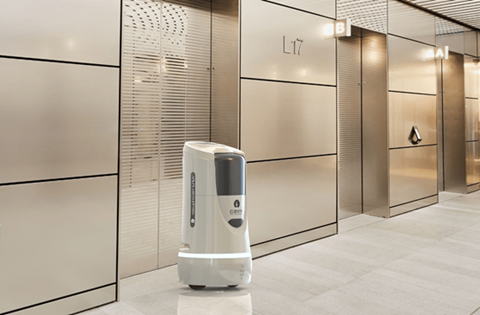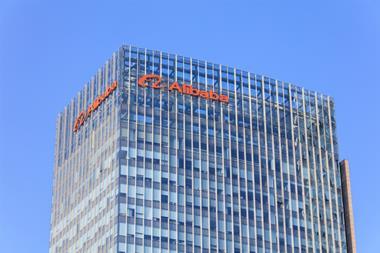Returning to China, Retail Week analyst Hanna Hua shares her experience of how technology such as facial recognition, payments and robots is transforming shopping. Can such dramatic change be expected in the UK?
A few weeks ago I was able to return to China, where I’m from, for the first time since before Covid hit in 2019.
I didn’t go to Beijing or Shanghai, but in all the places I visited the pace of change in retail technology over just a few years was astonishing.
Facial recognition is everywhere
In China, the use of facial recognition technology for daily activities is already a familiar practice for many, despite privacy concerns in other markets.

During my previous visit to China in 2019, I noticed that facial recognition was mainly used for ID verification in police stations, banks, underground train stations, airports and hotel check-ins.
This time I was struck by the extent to which facial recognition technology has become fully integrated into various daily activities.
It has been widely adopted for payments in all kinds of retail stores, including coffee shops, vending machines and popular fast-food chains such as McDonald’s.
“Many people are using this payment method for faster checkouts and it appears to have become the accepted norm, accelerated through the major payment providers”
Additionally, it is used for age verification in games and even for smart home appliances.
Many people are using this payment method for faster checkouts and it appears to have become the accepted norm, accelerated through the major payment providers.
In comparison, the much slower adoption of facial recognition technology in other markets can be attributed to concerns related to data protection, privacy and legal regulations.
For example, in the UK, facial recognition technology is achievable, but its implementation is subject to legal and ethical considerations.
Nevertheless, companies including Amazon, Tesco and Aldi have taken steps towards using the technology and it is likely that more retailers will follow.
However, the big consideration will be – in contrast to China – those individuals who are not comfortable with facial recognition technology and the need to provide alternative options to avoid alienating them and losing their spend.
Apple Pay – no way?
During my visit, I did not use cash or my Monzo or bank global money card. The mainstream payment methods are QR-code-driven e-wallets Alipay and WeChat Pay.

I didn’t see any PoS machines in stores I visited for Apple Pay or credit card payments.
Whether it was for transportation (tube, taxi, train, flights), buying street food, bubble tea, takeaways or dining at restaurants, paying bills, buying cinema tickets or visiting national attractions, Alipay and WeChat Pay served as default payment methods.
Why are people mainly or only using e-wallets such as Alipay or WeChat Pay? If you have any cash balance in your e-wallet, you can earn interest (around about 3% annually) and it is paid daily.
As a small business, if you use e-wallets to receive payments, Alipay and WeChat Pay charge a very low transaction fee – between 0.1% to 0.5% – which is significantly lower than the standard card transaction fees for the big card providers established in the UK and other Western markets. These card transaction fees typically range between 1.5% to 3.5% and can be as high as 6% per sale.
Beijing or Shanghai may well be different – these are major tourist destinations so tend to have wider acceptance of cash, foreign currencies, Apple Pay and credit cards.
Post-pandemic rise of robots
I was also surprised to see a proliferation of robots, including a patrolling robot (in a square) and hotel room-service robots.
These room-service robots are widely employed in hotels across China. They can navigate their way through the building, including via lifts, and reach your floor to deliver food directly to your door. They are extremely convenient and a time-saver for busy hotel staff.

The extensive use of robots in hotels is primarily a consequence of the Covid-19 pandemic, when the need for contactless services and strict control measures were in place.
I believe that service robots offer value to customers and may well be adopted over the next few years by retailers in the UK.
There are already a few similar robots in the market, such as Co-op’s Starship Technologies delivery robots and Currys’ KettyBot for store navigation.
By using more service robots, retailers can enhance their customer service, free up staff to help customers in person and potentially streamline some less value-added operations.
Self-checkouts less common in smaller cities
In my local town, I visited two large supermarkets and was surprised to find that neither had self-checkouts.
Curious about this, I contacted a friend in Shanghai who confirmed they do have self-checkouts there.
However, she mentioned that most people she knows prefer to use one-hour instant grocery delivery services. Platforms such as Meituan and Ele.me are quite popular, and she rarely goes to supermarkets.
“Even in small cities, I experienced ‘China speed’. Cities move at a fast pace and everyone is busy – very busy”
There are also traditional platforms like Taobao/Tmall, Pingduoduo, and JD.com where customers can do grocery shopping.
In China, delivery fees are inexpensive and delivery speed is incredibly fast. On average, the delivery cost is equivalent to $1 (80p) or may even be waived entirely when you reach a minimum order spend of £3 to £10.
My two-week visit was short and, sadly, I did not have the opportunity to visit Beijing or Shanghai. However, even in small cities, I experienced ‘China speed’. Cities move at a fast pace and everyone is busy – very busy.
Due to the unique culture and environment in China, people eagerly embrace the rapid advancement of technologies in their daily lives.
However, many seem too busy to fully understand the technology and the potential risks it might bring.
The rapid advance of technology can be expected to continue in China and much of it will be adopted elsewhere. However, in other geographies, adoption is likely to be at a slower pace and mindful of the needs addressed.































2 Readers' comments